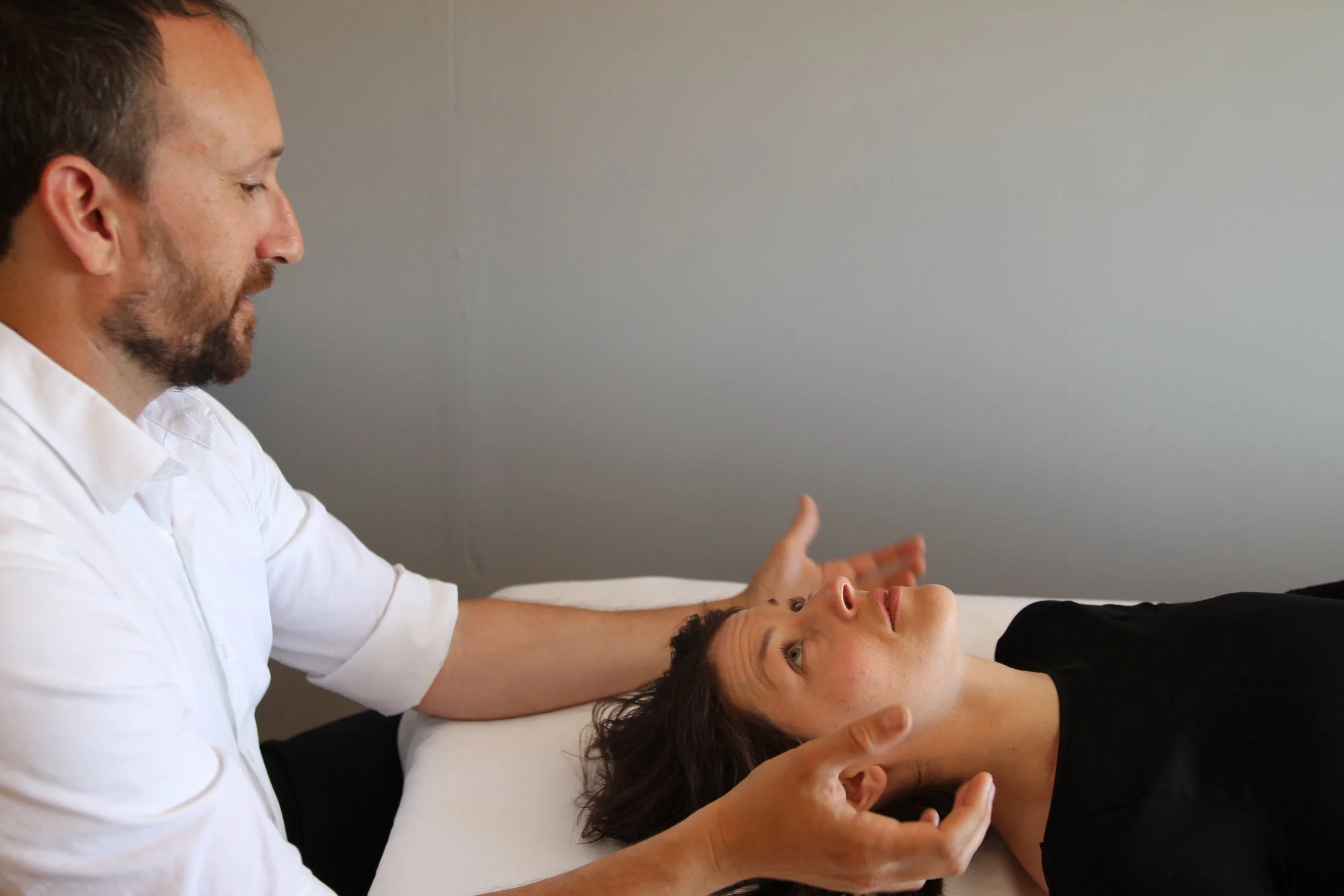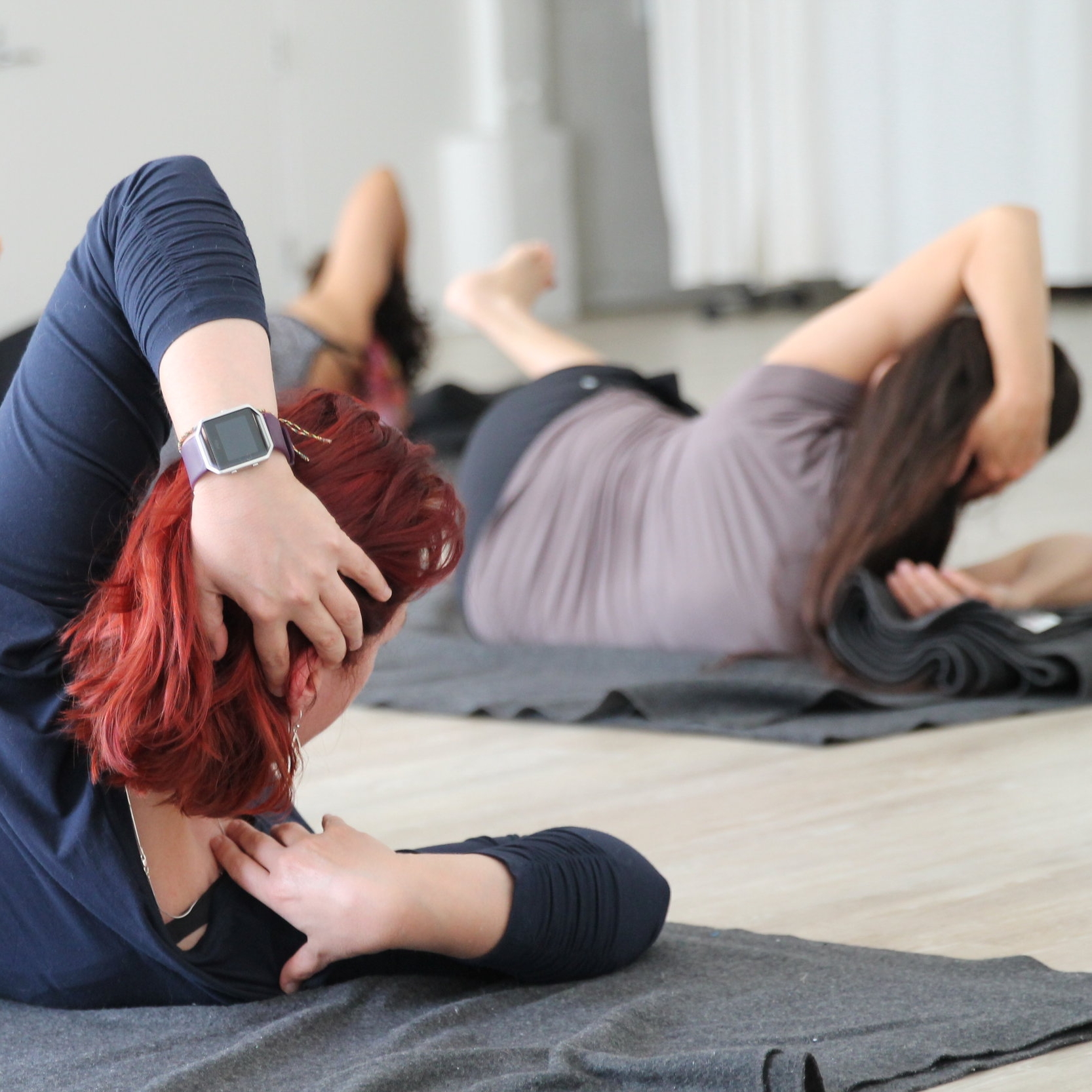What Is Somatics
Somatics focuses on enhancing and improving your experience living in your body.
//
A brief History
In the 1900s, pioneers such as FM Alexander, Moshe Feldenkrais, Elsa Gindler, Charlotte Selver, and Thomas Hanna systematically explored, developed and taught methods of self-improvement through awareness and movement. Thomas Hanna named this field Somatics and explained that Somatology is the study of the first-person experience of a body. The concept that mind and body are separate is a dualistic concept derived from a third-person, outsider, perspective.
The somatic, first-person experience is fluid, integrated, and whole.
Methods of Somatic Education embrace holism, the understanding that you are an inseparable whole organism. The somatic perspective is from the inside. It is your experience living within your body. Somatic techniques are designed to enhance your experience in your body so that you are more fully in control. Hanna’s method of Somatic Education is focused specifically on teaching you to regain control over your muscles and relax them in order to reverse the effects of accumulated tension, injury, and stress typically thought of as aging.
How It Works
Learning any new task or skill such as swimming, bicycling, or dancing requires focus and mental effort, initially. You must really pay attention to what you're doing. As you gain competency, your system starts to learn and habituate that action. It becomes easy and requires less and less attention. Pretty soon you're doing it without thinking.
Similarly, you can habituate actions that are harmful, such as sitting at a desk for long hours, running with improper form, or squeezing feet into tight shoes. If you've noticed yourself getting stiffer and less comfortable in your body as you age, you're feeling this effect. Your system is likely working perfectly, it's simply being led to dysfunction and pain.
So, even though your actions are controlled by brain activity, most of it is occurring at the unconscious and involuntary level. This means you don't feel the muscle contractions underlying your activities and are unable to easily change them in the moment. This is what causes stuck posture, poor gait, compensations, and nagging tension/pain. Thomas Hanna labelled this dual loss of feeling and control as Sensory Motor Amnesia; when the functions and feelings of your body have been lost to your unconscious.
Somatics works by engaging the voluntary, attentive parts of your brain to reconnect with these habituated behaviors and stop them. Through slow, controlled movement you can access your body's master control center (the cerebral cortex) and learn to relax contracted muscles while developing more supportive, pain-free movement patterns.
Modern advances in Neuroscience research largely support the theories underlying these experiential methods. Studies on neuroplasticity demonstrate that the brain and nervous system are able to form new connections at any point in our life. So the old adage that you can't teach an old dog new tricks is no longer relevant.
The immense capacity to learn "new tricks" is precisely what makes humans unique. If you want that "new trick" to be moving freely, without pain, Somatic Education is for you.
Interested in the potential of Somatics?
Discover how ELEVATED SOMATICS could benefit you below
Elevated Sessions
Investigate the benefits of 1:1 Bodywork or 1:1 Somatic Education.
Elevated Online
Audio and video resources so you can start experiencing somatics right now.
Elevated GROUPS
Check here to join or plan a somatic workshop/class or bodywork training





